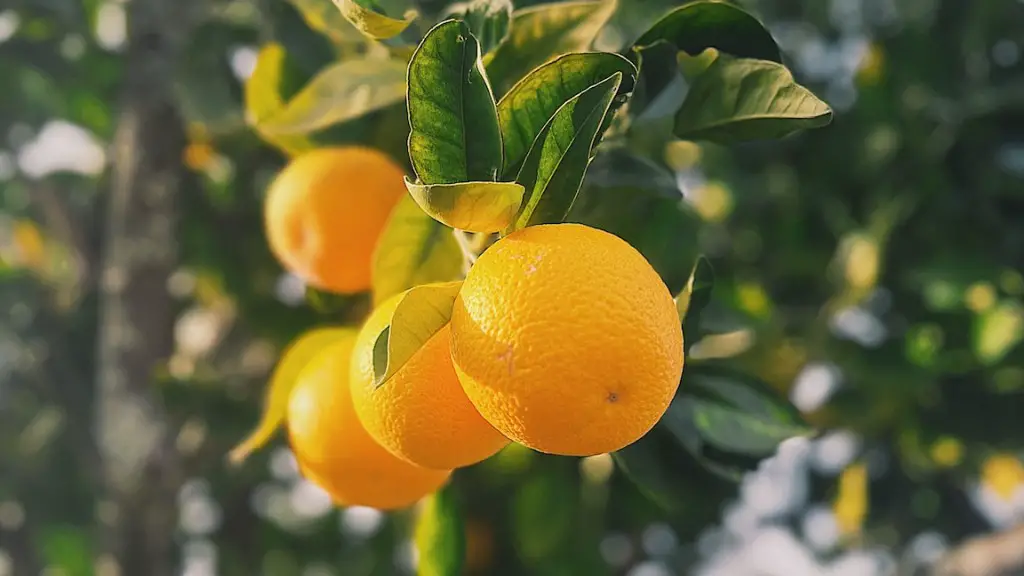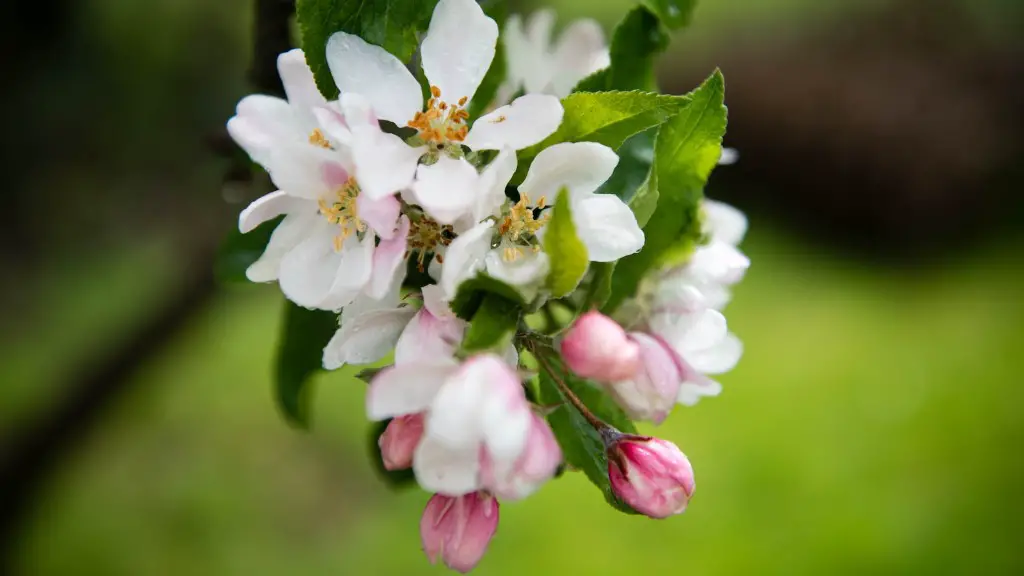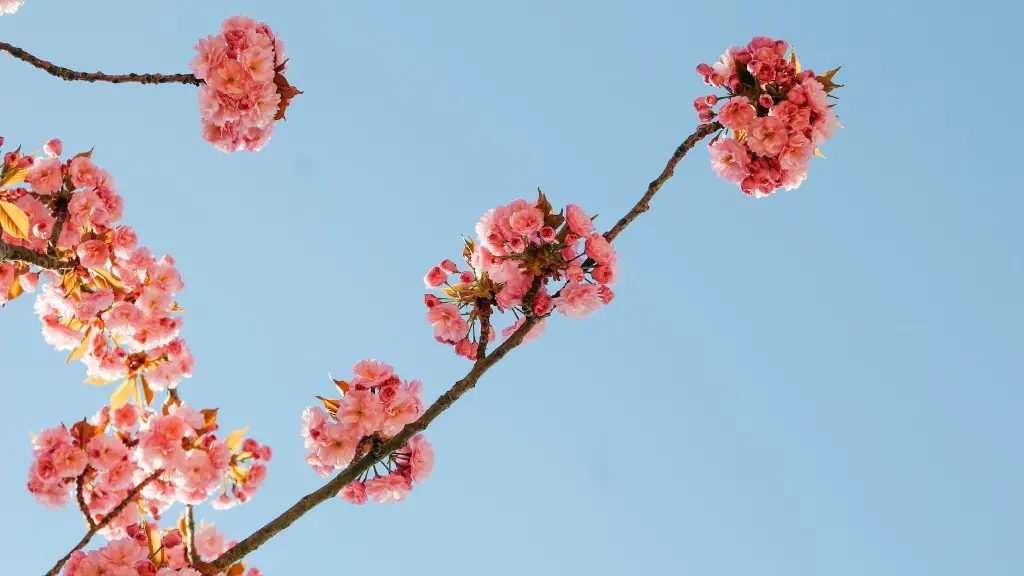Crab apple trees are a great way to add beauty and value to your property. But when should you plant them? It’s important to know when to plant a crab apple tree to ensure that it receives the care and attention it needs during its growth and establishment stages. Let’s explore this topic further.
The best time of year to plant a crab apple tree will depend on your local climate. Generally, the spring months of March and April are the best times to plant these trees as temperatures are usually warmer and rainfall is more plentiful. Planting during this period allows the tree to establish well before the summer weather and any drought conditions arrive. The greatest success in establishing a crab apple tree can be achieved by planting between late March and the middle of April.
For temperate climates, damp soil conditions are best for planting a crab apple tree. As the sun moves south, the duration and intensity of sunlight decrease. Cooler soils mean that seedlings and saplings get off to a slower start than in warmer soils. Therefore, planting in warmer soils is more likely to promote faster and better root growth. Planting when the soil temperature is at least 5-10C is recommended.
In colder climates, a crab apple tree can be planted in the late winter months of January and February, before the sprigs start to break dormancy. Planting during these months allows for more growth before the hot, dry summers arrive and the tree goes dormant for the summer. If planted early enough, the tree will also benefit from the moisture of the early spring.
To further improve the chances of success, it’s important to prepare the soil in advance. Dig a hole twice as wide and twice as deep as the root ball of your tree. Incorporate organic matter such as fertilizer, compost, rotted manure, or peat moss into the soil before planting your crab apple tree.
Also, using a specialized fertilizer specifically designed for crab apple trees can help promote healthy growth, both in the early stages of planting and after the tree is established. This type of fertilizer is rich in potassium, phosphorous, calcium, and magnesium all of which help to improve the soil structure and water-holding capabilities for the tree.
Finally, when planting a crab apple tree, be sure to water it well after planting as this will encourage the roots to grow and establish quickly. Allow the water to slowly soak into the soil and ensure that the tree receives at least an inch of water each week during the first season. Once the tree has been established, it should be able to survive with only occasional deep watering during hot and dry spells.
Pruning
In addition to timely and proper planting, pruning is also an important part of successfully growing a crab apple tree. Pruning in the early stages of growth will help to encourage proper branching and create a strong structure for the tree to grow on. For most varieties, the best time to prune a crab apple tree is in the late winter or early spring. Don’t prune too heavily, as this may cause stress on the tree. Also, be sure to use sharp tools when pruning so that you don’t damage the tree.
Pruning should be done to thin out the limbs and branches to promote air flow, increase sunlight penetration, and reduce the risk of disease. When pruning, remove any dead or dying branches, as well as any branches that are crossing or rubbing against each other. Also, make sure to remove any suckers at the base of the tree. These are shoots that come from the tree’s root system, and if left to grow will steal energy from the rest of the tree.
In addition to pruning for structure, pruning for fruit production should also be done. The best way to maximize the amount of fruit your tree will produce it to prune the number of fruits to one or two per spur. Spurring means that the tree will only flower and produce fruit on the small twigs produced on the main branches of the tree.
Finally, it is a good idea to regularly inspect your crab apple tree for signs of pest infestations or diseases. Be sure to quickly act if any problems are spotted in order to keep your tree healthy and productive for years to come.
Mulching
Mulching is another important tool for successfully growing a crab apple tree. Mulching helps to regulate soil temperature, retain moisture throughout the tree’s growing season, and prevent weed growth. The best type of mulch to use is organic, such as bark chips or wood chips. Avoid using plastic, as this can trap heat and cause the soil to become too warm.
When mulching around a young crab apple tree, spread a layer of mulch 2-3 inches thick around the trunk, making sure to keep the mulch away from the trunk itself. As the tree grows and matures, this mulch layer can be gradually increased to a depth of 6-8 inches. Also, be sure to check the mulch periodically to make sure it is still fresh.
A key factor to consider when applying mulch is the amount of nitrogen available in the soil. Too much nitrogen can cause the tree to produce more leaves at the expense of fruit and flowers. If your soil has a higher amount of nitrogen, a nitrogen-depleting material such as wood chips or straw can be used as mulch. This will help to keep the soil balanced and allow the tree to produce abundant fruits and flowers.
Finally, it’s important to remember that while mulching can be beneficial, it should not be done too close to the trunk of the tree. This can encourage root rot, create an environment that is too wet, and encourage rodents and other pests that may damage the tree.
Fertilizing
Fertilizing is also an important part of growing a healthy and productive crab apple tree. Fertilizing with a general-purpose fertilizer that is specifically designed for fruiting trees is best. Also, keep in mind that the needs of your tree may change over time and with different growing seasons, so be sure to use the fertilizer appropriately and adjust for your tree’s particular needs.
When fertilizing, be sure to apply the fertilizer evenly and according to the manufacturer’s directions. Additionally, fertilizing should be done in the early spring before the buds break. This will ensure that the tree has all the necessary nutrients needed for heavy fruit production during the summer months.
It’s also a good idea to give your tree a supplemental dose of nitrogen throughout the growing season. Applying a slow-release fertilizer to the buds in the spring can provide a steady source of nitrogen throughout the summer. Late summer and early fall are also times to apply fertilizer to encourage the tree’s growth before the onset of the cold weather.
Finally, be sure to regularly monitor the nutrition levels in the soil to ensure that you are providing your tree all the vitamins and minerals it needs. A soil test once a year or every other year is recommended in order to determine any nutrient deficiencies.
Pest Control
Pest control is an important part of keeping a crab apple tree healthy and productive. When pests become a problem, it is important to identify the type of pest and determine what the control methods are for that particular species.
Common pests that affect crab apple trees include scale insects, aphids, caterpillars, and borers. Scale insects, which look like small bumps attached to the branches, suck sap from the tree and can weaken the tree to the point of death if left unchecked. Aphids are small insects that suck the sap from the leaves and can cause stunted growth and foliage discoloration. With caterpillars, these voracious eaters can quickly strip a tree of its foliage, while borers feed on the inner bark and can cause significant structural damage to the tree.
In order to protect your tree from these pests, be sure to regularly inspect it and take note of any signs of pest activity. If any pests are spotted, be sure to take swift action to control the damage. This can involve removing the pests by hand, encouraging beneficial insects through planting, or using an insecticide if necessary.
It is also important to ensure that your tree has good air circulation and is not stressed by environmental conditions such as drought or extreme temperatures. Stress can make the tree more susceptible to pest infestations, so it is important to regularly monitor and adjust your tree’s environment as needed.
Watering
Regular watering is essential in order to promote healthy growth and maintain fruit production. Generally, your crab apple tree should receive at least 1 inch of water each week during the growing season, and extra watering may be necessary in especially hot or dry conditions. Watering should be done deeply and slowly, and it is best to water the tree in the cool of the morning.
Additionally, it may be helpful to install a drip irrigation system to make sure your tree is receiving the proper amount of water. This system can be slow-running and low-pressure, so that the water is not wasted, and it will help to keep a steady and consistent level of moisture in the soil.
It is also important to ensure that your tree is not getting too much water. Too much water can lead to root rot and other diseases, so be sure not to overwater your tree. If you notice that the foliage is wilted or dropping prematurely, this may be a sign that your tree is being overwatered.
In conclusion, when planting a crab apple tree it is important to pay attention to timing, soil preparation, pruning, mulching, fertilizing, pest control, and watering in order to ensure a healthy and productive tree.



